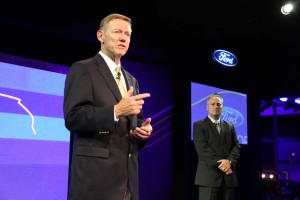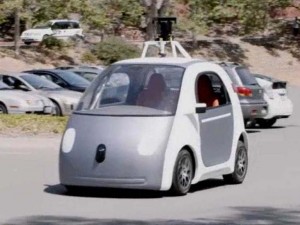
Ford CEO Alan Mulally has been "retired" less than a month, but already has a new "gig" as a member of Google's board of directors.
He’s been “retired” for less than a month, but former Ford CEO Alan Mulally has already resurfaced, shifting gears once again as he enters the high-tech world with a new board position at Silicon Valley’s Google Inc.
The new position actually takes advantage of Mulally’s eight years at Ford, Google itself pressing into the automotive space with new in-car infotainment technology, while also taking a lead in the development of autonomous vehicles.
“Alan brings a wealth of proven business and technology leadership experience,” CEO Larry Page commented. “I am so pleased that Alan is now joining Google’s board.”
The part-time job – which will see Mulally serving on Google’s audit committee – comes with a bit of irony. Until early this year, the well-regarded executive was considered a top contender to replace Steve Ballmer as CEO of Google’s high-tech rival Microsoft.
Nonetheless, it’s another shift for Mulally, who had spent most of his career at Boeing before joining Ford in 2006. He retired on July 1 and was replaced by long-time lieutenant Mark Fields, Ford’s chief operating officer since 2012.
(Click Here for a profile of new Ford CEO Mark Fields – and a look at the challenges he faces.)
During his tenure at Ford Mulally emerged as a star CEO for leading a storybook turnaround after the company mortgaged all of its major assets, including the fabled Blue Oval logo. While considered the weakest of the Detroit makers in the years before his arrival, Ford ultimately was the only domestic manufacturer not to slide into bankruptcy, and it achieved its turnaround without a government bailout.
At the same time, Mulally deftly short circuited Ford’s traditionally acrimonious internal politics and became an engaging spokesman for the company’s products.
By the time he stepped aside a month before his 69th birthday Mulally had become something of a celebrity who was routinely asked for his autograph.
Until he took himself out of the running, Mulally was considered a strong candidate for the chief executive spot with Microsoft, in Seattle. But the tech firm’s inside veteran Satya Nadella was named CEO in January, weeks after Mulally said he would remain with Ford.
Mulally’s appointment and his high-profile links to the automotive industry could be helpful to Google which has positioned itself as a leader in the development of self-driving cars, recently announcing plans to begin rolling out a fleet of 100 prototypes starting this year. Whether that might see a link between Google and Ford forged by Mulally remains to be seen, but Google has made it clear it is looking for traditional automotive partners who might want to work with it on autonomous driving.
(Click Here for the latest on the Google autonomous vehicle program.)
Mulally, who is continuing to serve as a consultant and adviser to Ford, also could serve as the automaker’s bridge to Silicon Valley. Fields has said he believes it’s important for Ford to understand and to work more closely with Silicon Valley.
Significantly, after Mulally pulled out of the Microsoft CEO search, Ford announced it would sever its relationship with that company, Microsoft having developed the popular, if troubled Sync infotainment system. Google – like its other rival, Apple – has been looking to increase its role in the in-car infotainment space.
(For more on Google’s new in-car technology, Click Here.)
Mulally will serve on Google’s audit committee, the Silicon Valley powerhouse said in a statement. The former Ford CEO will receive an initial grant of $1 million in Google stock, an annual equity award of $350,000, and a $75,000 cash retainer and reimbursement of expenses, Google said in a filing with the Securities Exchange Commission.
Mulally’s appointment comes less than two months after Google unveiled the latest prototype of its self-driving car, a move which General Motors Co.’s Mark Reuss said could become a “serious competitive threat” to the world’s traditional carmakers.
Googles founders, Larry Page and Sergei Brin, have indicated they are completely serious about making Google a major factor in the automotive industry.
(Paul A. Eisenstein contributed to this report.)


There needs to be a tremendous amount of thought and testing of autonomous vehicles before they are given the green light to be tested in public. There are so many things that can go wrong that it’s just staggering to even ponder, let alone the consequences. There are certainly places where autonomous devices make sense but as a society we can’t afford to not get it right when it comes to autonomous vehicles.